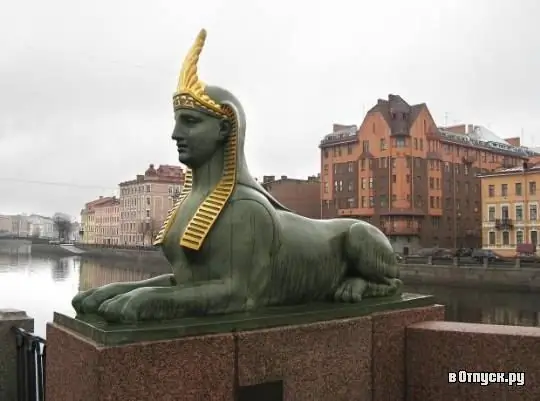
Description of the attraction
The Kapustin House is located near the Egyptian Bridge on the Fontanka River embankment and is a pearl of the Northern Art Nouveau architectural style. This building stands out among the surrounding architecture with its unusual silhouette, numerous balconies, towers and bay windows. The house was built in 1910-12. for the construction contractor Konstantin Kapustin.
K. I. Kapustin was the fifth son of the merchant Kapustin. After graduating from the Institute of Civil Engineers in 1908, he began to engage in contract work. He inherited houses on Fontanka (№157 and 159). Work on the new construction of house No. 159, they were entrusted with his classmate at the institute, the architect A. Bubyr.
A. F. Bubyr is one of the brightest architects of Russian Art Nouveau. He has developed numerous projects for industrial and public buildings in St. Petersburg, Tallinn, Sochi. All buildings built according to his designs (for example, house number 23 on Kovensky lane, house number 62 on Zagorodny prospect, house number 27 on Tavricheskaya street) are distinguished by a special, uncommon appearance.
The architect faced a difficult task, since the building site was located among rather unpresentable buildings, and besides, they had different heights. Then Aleksey Bubyr decided to create a building-monument, which would "hold" all this heterogeneous and vast space around him. The house personified a blood that protects both from the vagaries of nature and life's problems. Throughout his career, the theme of a safe corner worried the architect. In this building, she received her highest expression.
Kapustin's house is designed to be perceived from afar, it is done rather large, without small elements, the only exception is a barely noticeable relief on the tongs.
The facade overlooking the Fontanka is a gigantic composition created from multi-colored planes of simple geometric outlines. The facade, made in two colors, at first glance, is completely haphazard, cut through the windows. But, if you look closely, you can find several interconnected axes of symmetry. The bay window picks up the axis of the entrance, which then goes into the narrow window of the gable. Light plaster emphasizes the main verticals: corners and bay window.
The high roof above the corner of the house interrupts the horizontal eaves. The balconies and tiled canopy above the second floor pick up the complex rhythm of the building's contours. The roof of the Kapustin house is made up of the intersection of a half-hip and gable roofs with an additional insert. The mansards in the building are false: above the sixth floor, all the windows are dormers, behind them is the attic, not the residential floor.
In some fragments of the building, the influence of Melzer's architecture on Kamenny Island is felt, tongs were taken from the Baltic architecture, but, nevertheless, all this quite harmoniously fits into the style of Bubyr and forms a wonderful whole.
A garage was located in the courtyard of the building, which was considered a curiosity at the time. But its presence was necessary for the owner of the house, K. I. Kapustin, who was fond of autosport. In July 1901 he was a member of the first Russian motorist Luga - Saint Petersburg. In 1902, Kapustin founded the St. Petersburg Automobile Club (SPAK), he established the Cup of his name. He traveled extensively in Western Europe and Russia by car. In mile races in 1905 on the Volkhonskoe highway, he set the Russian speed record - when starting from a course of 57.7 km / h.
The house of Kapustin was built as an affordable one, all apartments, except for apartment number 9, where the owner himself lived, were rented out before the revolution. Today Kapustin's house is also a residential one. The house celebrates its centenary not quite traditionally: the residents of the house hold protest actions, expressing their disagreement with the high-rise development of the site next to their house. The new construction threatens the safety of Kapustin's house as an object of cultural heritage, and Changin's house next to it.






